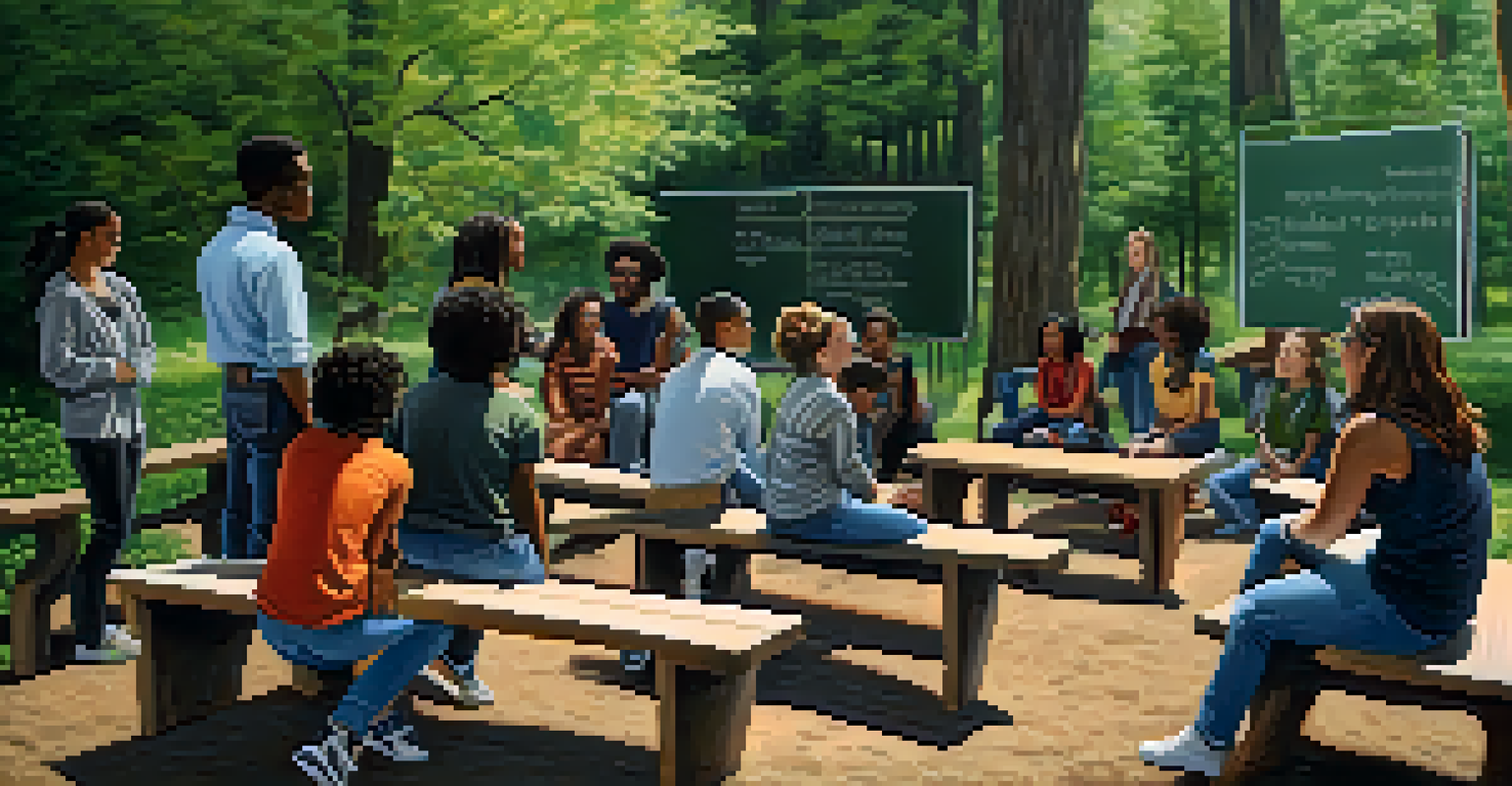Marijuana Legalization and Its Effect on Youth Crime Rates

Understanding Marijuana Legalization: A Brief Overview
Marijuana legalization refers to the process of making cannabis legal for recreational or medicinal use. As more states and countries adopt these laws, it’s crucial to understand the implications. This shift is significant not only for adult users but also for the youth who are often caught in the crossfire of public perception and law enforcement.
Marijuana legalization is not just a legal issue; it’s a public health issue, and it’s essential that we educate our youth about the risks and benefits associated with its use.
The idea behind legalization is to regulate and control marijuana, similar to alcohol or tobacco. This means that age restrictions, quality control, and taxation come into play. However, these regulations can also influence how young people perceive and interact with marijuana, potentially affecting their behavior and choices.
As we delve into the effects on youth crime rates, it’s essential to consider the overall social context. Legalization may reduce illicit trade and allow for better educational programs regarding substance use, which could lead to safer environments for young individuals.
Youth Crime Rates: What Do the Numbers Say?
Youth crime rates, particularly related to drug offenses, have been a significant concern for many communities. Statistics reveal that when marijuana is legalized, the number of arrests for possession often decreases. However, this doesn’t always translate to a straightforward decrease in overall youth crime rates.

Research indicates that in some areas where marijuana has been legalized, there is a noted decline in youth-related drug offenses. This may suggest that legalization helps to eliminate the black market, making it harder for minors to access marijuana through illegal means. Furthermore, it could reflect a shift in policing priorities, focusing on more serious crimes.
Legalization Alters Youth Perceptions
The legalization of marijuana can reduce its stigma among youth, potentially influencing their attitudes toward drug use.
Despite these trends, it’s important to examine the nuances in the data. Some studies show mixed results, indicating that while certain crimes related to marijuana may decrease, others might not show significant changes. Thus, understanding this complex landscape is vital for policymakers and communities.
The Role of Education and Awareness in Legalization
Education plays a critical role in shaping how youth perceive marijuana, especially in a legalized context. Programs aimed at informing young people about the risks and benefits of cannabis use can help mitigate potential negative outcomes. These initiatives can empower youth with knowledge, making them less susceptible to misinformation.
It’s crucial that we create a culture of responsibility around cannabis use, especially among young people who are still developing.
With legalization, there’s an opportunity to provide more comprehensive drug education. Schools and community organizations can develop curricula that address not just marijuana but also broader topics around substance use and decision-making. This proactive approach can lead to more informed choices among young people.
Moreover, legal frameworks surrounding marijuana can support these educational efforts. By prioritizing transparency and responsible use, communities can cultivate an environment where youth feel safer discussing their questions and concerns about marijuana without fear of stigma or punishment.
Potential Risks of Marijuana Use Among Youth
While legalization can offer benefits, it also presents potential risks for youth. Studies suggest that early exposure to marijuana can affect brain development, potentially leading to cognitive and behavioral issues. Understanding these risks is crucial for parents, educators, and policymakers to foster healthy environments for young individuals.
Increased accessibility can lead to higher rates of experimentation among youth, which raises concerns about addiction and mental health. As marijuana becomes more normalized, some young people may underestimate its potential impacts, leading to misuse. This underscores the need for ongoing education about responsible use and awareness of the associated risks.
Education Is Key for Youth Safety
Comprehensive drug education programs are essential to help young people make informed decisions about marijuana use.
Moreover, conversations around marijuana should not ignore its potential for dependency. By acknowledging these risks, communities can better prepare youth to navigate their choices, ensuring they have the support and resources they need to make informed decisions.
The Impact of Legalization on Youth Perceptions
Legalization significantly alters how young people view marijuana. When cannabis is legalized, it may lose some of its stigma, making it seem less dangerous or appealing to try. This shift in perception is crucial, as it influences how youth approach drug use and their willingness to engage in risky behaviors.
Young people often look to their environment for cues on what is acceptable. If legalization leads to more open discussions about cannabis, it can foster a culture of responsibility rather than rebellion. This environment can encourage youth to think critically about their choices and engage in informed conversations about substance use.
However, it’s essential to balance this normalization with educational efforts that emphasize moderation and health. Striking this balance can help young individuals develop a more nuanced understanding of marijuana, ultimately guiding them toward healthier lifestyle choices.
Community Responses to Legalization and Youth Crime
Communities respond to marijuana legalization in various ways, often reflecting their unique values and concerns. Some areas may embrace legalization, viewing it as a chance to redirect law enforcement efforts and invest in community programs. Others might express apprehension about the potential for increased youth access and experimentation.
Community engagement is key to addressing concerns related to youth and marijuana. By involving local stakeholders—including parents, educators, and healthcare professionals—communities can develop tailored strategies that prioritize youth safety and education. This collaborative approach fosters a sense of shared responsibility and encourages positive outcomes.
Community Involvement Drives Success
Engaging local stakeholders in discussions about marijuana legalization fosters a collaborative approach to youth safety and education.
Moreover, successful community responses often involve monitoring changes in youth behavior and crime rates post-legalization. This data-driven approach allows for adjustments to be made in real-time, ensuring that the community remains responsive to emerging challenges and opportunities.
Future Considerations: Balancing Legalization and Youth Safety
As more regions consider marijuana legalization, it’s vital to keep youth safety at the forefront of discussions. Policymakers must strike a balance between allowing adult use and protecting young individuals from potential harm. This involves crafting regulations that limit youth access while promoting responsible use among adults.
Future legislation should also prioritize funding for educational programs aimed at youth. By investing in comprehensive drug education, communities can equip young people with the tools they need to navigate the complexities of substance use. This proactive approach can help mitigate some of the risks associated with legalization.

Ultimately, the conversation around marijuana legalization and youth crime rates is ongoing. As society evolves, so too must our strategies for ensuring that young individuals are protected while still allowing for responsible adult use. By working together, communities can create environments that foster safety, education, and informed decision-making.